Publication
Article
MD Magazine®
The Evolution of Wearable Wellness Technology
Author(s):
A small minority of Americans currently own wearable technology such as smartwatches and mobile health tracking devices, but the consumer space is getting more and more crowded as companies jump into the mix.
Just a small minority of Americans currently own wearable technology such as smartwatches and mobile health tracking devices, but the consumer space is getting more and more crowded as companies jump into the mix.
Of the 15% of Americans who own and use some form of wearable technology, 61% have a fitness wristband, 45% have a smartwatch, and 17% have a mobile health tracking device, according to Nielsen survey results released in March. While current ownership is low, nearly half of Americans expressed interest in purchasing wearable technology.
Patients aren’t the only consumers who can benefit directly from wearable wellness technology, though. Susan M. Reese, MBA, RN, CPHIMS, director of the Healthcare Practice Group at Kronos, wrote how this technology can help prevent healthcare errors as a result of fatigue.
She cited a 2013 Kronos survey that not only found nurse fatigue is pervasive, but it is also directly linked to on-the-job errors. Nearly 65% of respondents said they almost made an error at work because of fatigue and more than 27% did make an error.
In her column for InformationWeek, Reese outlines how wearable technology can prevent errors and provide a solution to an issue with which many hospitals and healthcare organizations have struggled.
“Imagine if nurses wore bracelets or sensors sewn into their uniforms that could monitor their critical vital signs. Nurse managers could have real-time visibility into the overall ‘health’ of their nurses, and, most importantly, insight into their fatigue levels.”
The technology could allow for a nurse to be sent home early and a replacement brought in all before the nurse becomes more tired and makes an error at work.
FitBit, Jawbone, Pebble, and Google Glass have all become household names in the wearable wellness technology space, but they are just the tip of the iceberg. Here’s a look at some of the future movers and shakers.
Samsung range
While Samsung tried to enter into the wearable market last year, its first foray with the Galaxy Gear smartwatch was mostly unsuccessful. The technology was viewed as gimmicky and if the 30% return rate of the smartwatch is anything to go by, then consumers weren’t impressed with how the device worked.
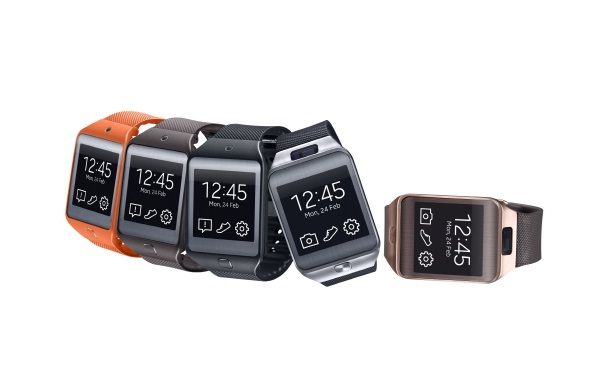
The Samsung Gear
However, Samsung hasn’t given up, and it is releasing 3 wearable devices: the Gear 2, the Gear 2 Neo, and the Gear Fit. All 3 have heart rate sensors.
The Gear 2 and the Gear 2 Neo (which comes without a camera) are the follow up to last year’s Galaxy Gear and the new design is slimmer and lighter. Plus, the improved battery life means users can track their fitness for 2 or 3 days without recharging.
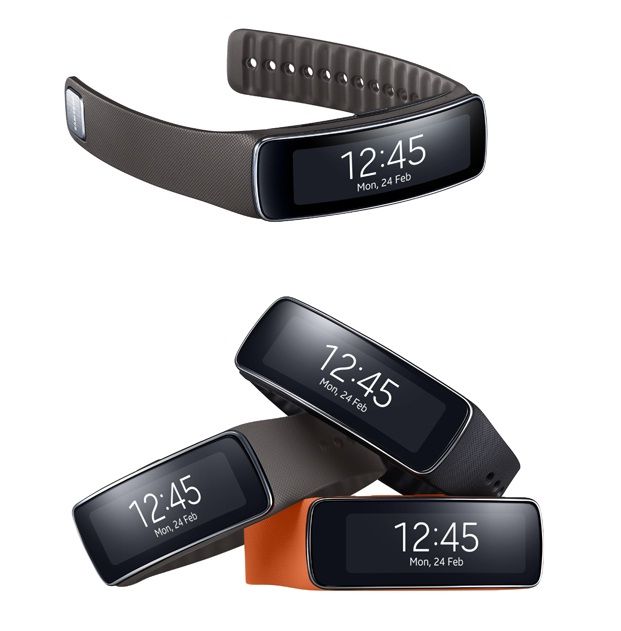
The Samsung Fit
The Gear Fit is an even smaller version of the smartwatch with a focus on tracking heart rate and counting steps—though, it also receives notifications and alerts from the user’s smartphone. The device, with a curved touchscreen, has a real-time fitness coach that sends alerts encouraging the user to speed up or slow down. The Fit has a slightly longer life than the Gear 2 and can last 3 or 4 days between charges with normal use.
Both the fitness band and the smartwatches hit the market in April.
Withings Pulse
A direct competitor of the FitBit One pedometer/sleep tracker, the Withings Pulse is priced similarly at $100. While it is not the sleekest looking technology, the Pulse does pack a punch. Within the little brick device is a pedometer, altimeter and sleep tracker, plus, it includes an optical heart rate sensor. The tracker clips onto clothing and captures your exercise data as steps, elevation, distance, and calories burned.

The Pulse can last 2 weeks on a charge, and has just one button to cycle through options and a touchscreen to provide more information.
While it relies heavily on the cloud to store your information, the Pulse can also connect via Bluetooth to your smartphone.
Lumo Lift
Not everything about the wearable wellness technology space is about working out and monitoring activity. Lumo released the large Lumo Back last year, which vibrated when the device detected bad posture.
The new Lumo Lift is much smaller and better for someone who will get out of his or her office chair and move around. Like most wearable devices, the Lift counts steps and calories burned, but it also detects when the user is lying down, sitting, walking or running, and, just like the Back, it vibrates to remind the user to stand up straight.
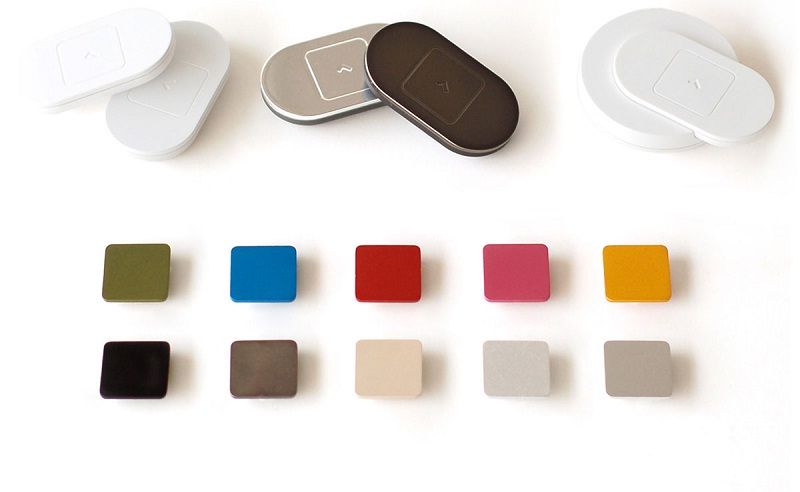
The Lift works exclusively with an iOS app to chart posture stats and includes a journal. The gadget has a magnetic clasp (in multiple designs) so the sensor is concealed underneath clothes. Right now the Lift is a crowdfunded project with prices ranging from $59 to $79.
Sony SmartWear
Like the Lumo Lift, the Sony SmartBand is interested in more than just your physical activity. The concept is still new, but the tracker will work with an app to log not only fitness data, but also life data. Sony is calling it “life logging,” which considers the time a user is in a car or train or how he or she communicates throughout the day.
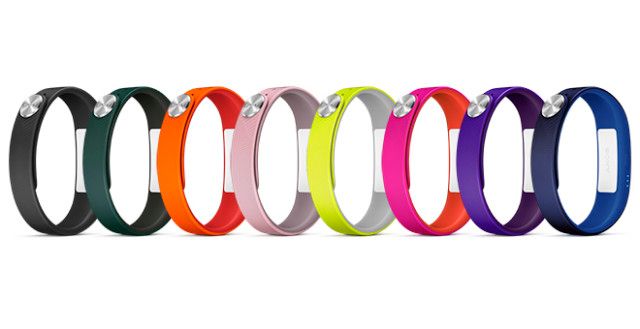
The tracker works with the Lifelog to record locations, communications, physical activity, and photos taken, according to website engadget. Since the band has no screen, users will set goals and monitor progress from an app on their smartphones.
Apple iWatch
The long-rumored iWatch from Apple still hasn’t been officially announced, but a new patent filing for “Wrist Pedometer Step Detection,” and the fact that Apple has reportedly added medical experts to its supposed iWatch team, has the tech world all aflutter. According to the patent, sensors in the fitness tracker could gather step frequency data and determine whether the user is walking or simply swinging his or her arm, reported Business Insider.
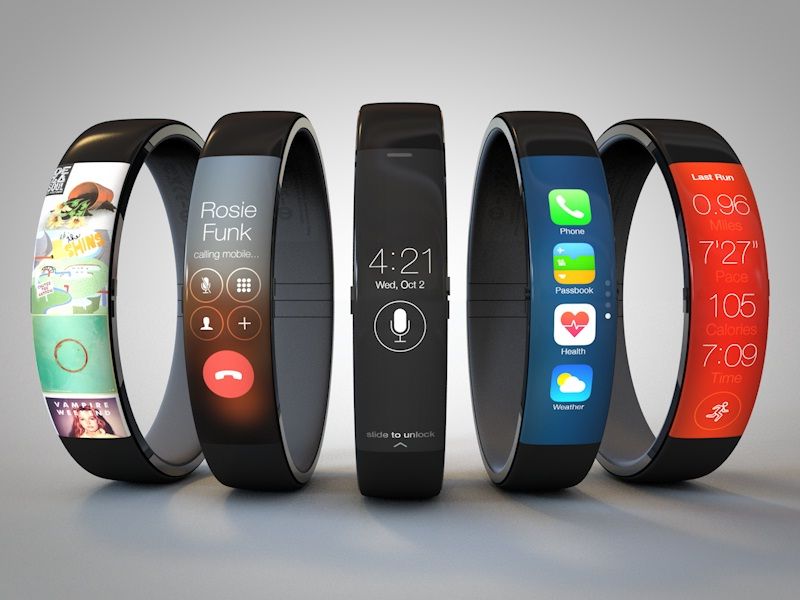
Concept art by Todd Hamilton
Further in favor of the iWatch being health-focused is the fact that Apple is rumored to be building a Healthbook app and has already met with the US Food and Drug Administration.
More than a year ago, The New York Times reported that whispers from insiders suggested that the Apple iWatch would be made of curved glass.
